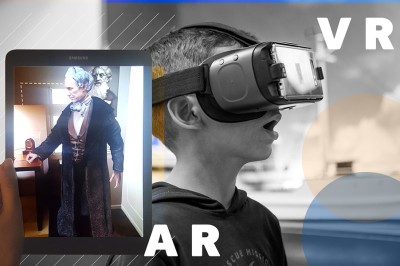The telephone in advertising

Oikonomikos Tachydromos, 1928: "Today advertising surrounds us on all sides. It concerns everything and installs itself everywhere. The cities, the countryside, even the sky belong to it. Every social action of ours is regulated and depends on it: What we eat, how we dress, how we travel, where we vacation, what we read, where we entertain ourselves, where we are educated — all these are imposed on us by advertising."
The invention and spread of the telephone coincides with the birth and expansion of advertising in the late 19th and early 20th century. Within the context of mass industrial production of goods, advertising emerges as the main mechanism that bridges supply and consumer desire.

An invention for the elite
"The mail is fast, the telegram faster, but the telephone is immediate and you don’t have to wait for a reply." (advertisement of Bell Company, 1905)
The telephone initially appeared as a technological innovation intended for businessmen and the social elite, while it had little relevance for the broader consumer public. The first telephone advertisements emphasized its ability to connect individuals and businesses, highlighting its speed and efficiency compared to older methods of communication, such as the telegram.

From luxury to intimacy
During the interwar period, advertising changed and aimed to transform the telephone from a luxury item into an essential good. The expansion of the network, the automation of telephony, and especially the entry of private companies into the market allowed the telephone to spread to wider social strata. Advertisements sought to turn the consumer into a subscriber of the telephone companies. The language of advertising highlighted the human need for connection — the ability to “bring your loved ones closer.” Ads created a sense of intimacy with the device, presenting it as “a friend in the home.”
In contrast, in Greece, advertising continued to target businesses. The advertisement of AETE (Hellenic Telephone Company) in the mid-1930s emphasized that the telephone device was “the key to the progress of every business.” However, gradually, the first ads began to appear showing women smiling as they spoke on the telephone, with the slogan: “It is indispensable.” These women were not workers but bourgeois ladies, for whom the telephone was “indispensable” as a marker of social status.

The emergence of mobile telephony
In the 1970s and 1980s, with thousands of citizens on waiting lists to obtain a telephone line, advertising for the telephone — especially under conditions of a state monopoly — was unnecessary. Things began to change with the advent of mobile telephony in the early 1990s. The competition among the new mobile companies, which entered the market almost simultaneously, sparked an explosion of telecommunications advertising. The ads targeted not so much businesspeople as the youth audience, who mainly used prepaid mobile phones and made greater use of text messaging and music services. For the first time, a telecommunications device — the mobile phone — became associated with pleasure. Everyday life was filled with advertising slogans and catchphrases that survived in spoken language far longer than the products they promoted.
Over the decades, as technology evolved, advertising continued to adapt, successively emphasizing speed, immediacy, and entertainment. Thus, advertising functioned not only as a means of promoting products but also as a cultural force that influenced how we perceive communication.

Photographs:
- Advertising photograph of OTE (Hellenic Telecommunications Organization) from the 1980s.
- French advertisement for a telephone device from 1913 aimed at businessmen.
- French interwar advertisement advocating the abolition of the state telecommunications monopoly, depicting the state telegraph service as a turtle.
- Advertisement of AETE (Hellenic Telephone Company) from the 1930s.
- Advertisement of Telekom, 2024.






